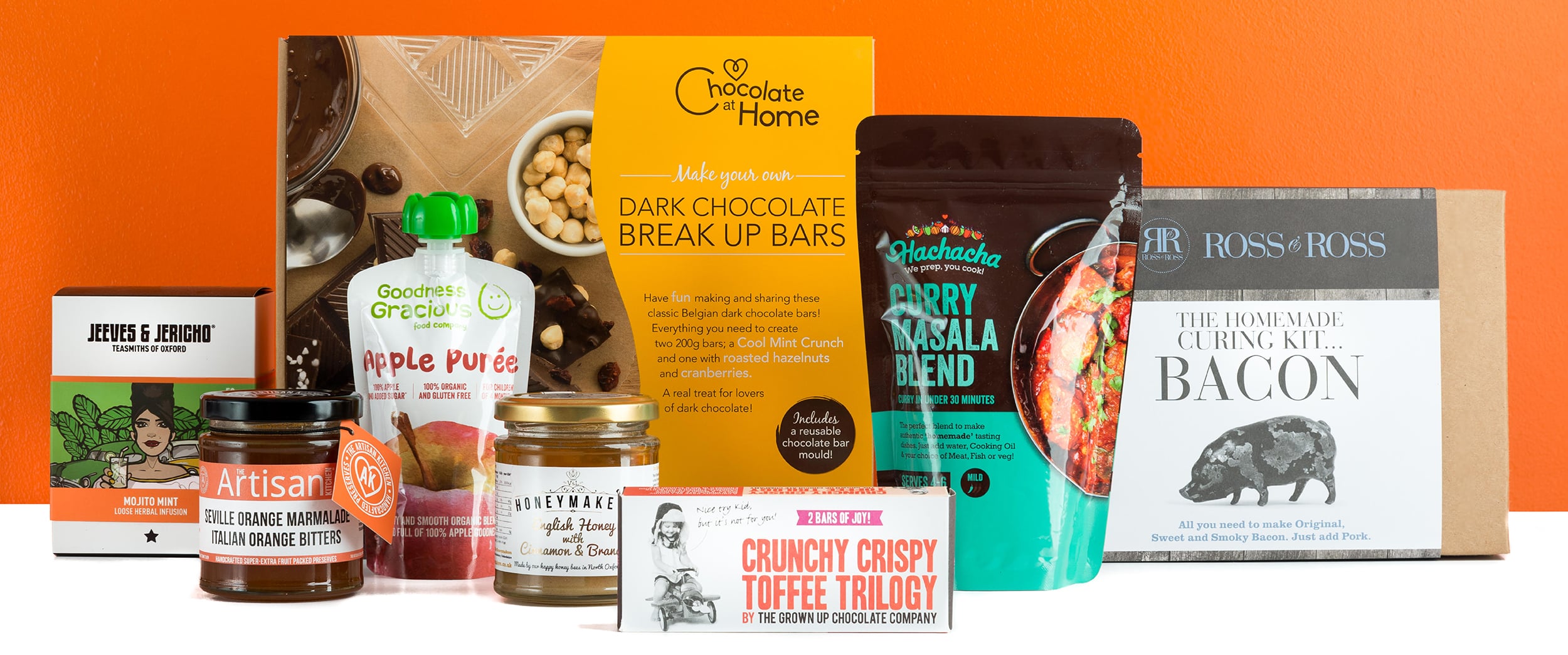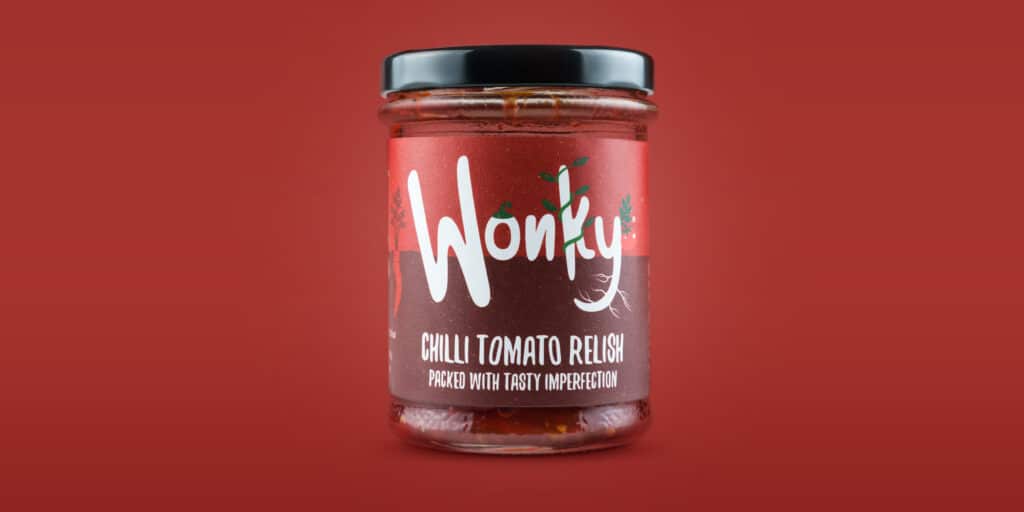Whilst visiting a fantastic and really busy local food festival this summer, I took in a wide range of fantastic products on show, from amazing artisan foods to local drinks producers.
Within the crowds though, and despite the types of product on sale, it was clear that some stands were far busier than others, upon taking a closer look, the main difference between popular and quieter stands was the level of food product marketing.
The producers that had clearly developed their brand identity and shown this on their stands and their products attracted the crowds, they looked enticing because they looked different to the next stand, consumers could understand what the products were and why they should buy them.

Artisan foods have never been more popular, consumers are really interested in finding and trying new, different and not mass produced foods and at this particular food fair, there were very few people who went home empty handed or empty-bellied.
Artisan food products are generally more expensive to buy than some of the bigger brands available from the supermarkets, and rightly so, they’re a lot better tasting!
However, in the eyes of the consumer, the way that the product is branded and packaged should portray the price band too, artisan producers cannot expect consumers to pay full price for their products that aren’t presented correctly.
Branding and packaging need not cost mega bucks to be effective, but it should be well thought out, bespoke, reflect the type of product that it is and appeal to its target market, for example, the branding of real ale or cider will look very different to artisan chocolates.
It’s easy to buy off-the-shelf packaging, labels and even to design a logo. But what would the difference be to your nearest competitor who bought the same or similar packaging and labels to you and a similar template logo?
Talk to us about your food brand today
How would potential consumers define your brand and its products? How would they know what the differences are? Brand identity is key to consumers understanding what your products are and making a purchase.

1. The Power of Brand Identity in Food Product Branding:
Brand identity is a crucial element in the world of food product marketing.
It encompasses the visual and conceptual aspects that define a brand, making it instantly recognisable and relatable to consumers.
Here, we delve into the significance of brand identity in the food industry, showcasing how it plays a pivotal role in setting a product apart from the competition and driving consumer loyalty.
- Understanding Brand Identity: Brand identity includes various elements, such as the brand name, logo, colour schemes, typography, packaging design, and the brand’s overall personality and values. When these elements harmoniously come together, they create a unique identity that distinguishes a product in a crowded marketplace.
- Setting a Product Apart: In a competitive food industry, where a plethora of products vies for consumer attention, a distinctive brand identity can be the key differentiator. It allows consumers to identify a product at a glance and forms an emotional connection.
- Building Trust and Loyalty: When customers have positive experiences with a product bearing a recognisable and trustworthy brand identity, they are more likely to repurchase and become brand advocates.
2. Tailoring Branding to Your Product:
When it comes to food product marketing, one size does not fit all.
Each type of food product, from real ale and artisan chocolates to cider and beyond, possesses a unique identity and appeals to a distinct target market.
Successful branding means tailoring your brand identity and packaging to the specific nature of your product.
- Understanding Product Specificity: The essence of tailoring branding to your product lies in recognising that every food item has a unique story, taste, and purpose. Whether it’s the rich complexity of real ale, the indulgent delight of artisan chocolates, or the refreshing crispness of cider, each product deserves its own narrative.
- The Importance of Consistency: While tailoring branding to your product is essential, maintaining consistency within that tailored identity is equally critical. Consistency ensures that your branding elements align with the product’s core message and the preferences of your target market.
- Creating an Emotional Connection: When consumers encounter a product with branding that speaks directly to their desires and expectations, they are more likely to form an emotional connection with it. This connection fosters brand loyalty and encourages repeat purchases.
3. The Importance of Originality:
One way to stand out in this crowded arena is through originality in branding.
It’s essential to understand the significance of avoiding generic labels and template logos.
Using these cookie-cutter approaches can lead to pitfalls and make it challenging for consumers to distinguish between products from different producers. Let’s delve into why originality matters and why food producers should invest in bespoke branding that sets them apart.
The Pitfalls of Generic Labels and Template Logos:
- Lack of Differentiation: When multiple products share the same or similar labels and logos, it becomes challenging for consumers to differentiate between them. Your product risks getting lost in the sea of similar-looking options.
- Loss of Identity: Generic branding fails to capture the unique story, quality, and character of your food product. It reduces your product to just another item on the shelf, devoid of personality.
- Weakened Brand Recognition: Building brand recognition is a long-term investment. Using generic labels and logos undermines this effort by failing to create memorable and distinct brand associations.
The Impact on Consumer Choice:
- Convey Quality: Original branding conveys a sense of quality, craftsmanship, and attention to detail. Consumers are more inclined to trust products that appear well-crafted.
- Tell a Story: Your product has a story to tell. Original branding provides the canvas for conveying this narrative, connecting with consumers on a deeper level.
4. Benefits of Brand Identity in Food Product Marketing:
In this section, we’ll explore the benefits of having a strong brand identity, how it attracts consumers, and helps producers define their unique selling points (USPs) effectively.
Attracting Consumers
- Recognition: A strong brand identity makes your product instantly recognizable. Consumers are more likely to choose a product they can identify and trust.
- Emotional Appeal: Effective branding triggers emotional responses. It can make consumers feel excited, comforted, or adventurous, depending on the branding’s message and aesthetics.
- Consistency: Consistency in branding builds trust. When consumers consistently encounter the same branding across different platforms and products, they become more confident in their choice.
Defining USPs:
- Clarity: A well-thought-out brand identity helps clarify your product’s unique attributes. It allows you to express what sets your food product apart from the rest.
- Differentiation: In a crowded marketplace, differentiation is crucial. Your brand identity ensures your product doesn’t get lost among similar offerings. It signals that you have something distinctive to offer.
- Consolidation of Message: Branding consolidates your message. It’s a concise and visual way to tell consumers why they should choose your product. Your USPs are woven into the branding, making them memorable.
5. Impact on Sales in Different Marketplaces:
Brand identity is a versatile tool that not only influences sales but also plays a pivotal role in various marketplaces within the food industry.
It’s a vital foundation for any food product marketing strategy.
From bustling food festivals and fairs to traditional retail stores, the impact of branding is far-reaching. Here, we’ll delve into how branding influences sales in different marketplaces and why it remains a vital component of a food producer’s success.
Food Festivals and Fairs:
Food festivals and fairs are unique marketplaces where producers have the opportunity to interact directly with consumers.
It’s a chance to showcase their products, engage in face-to-face conversations, and create memorable experiences.
However, even in this setting, a compelling brand design can significantly impact foot traffic and sales.
- Attracting Attention: In the midst of a vibrant and bustling festival, it’s essential to stand out. An eye-catching brand identity can attract the attention of festival-goers, drawing them towards your stand. Vibrant colors, engaging visuals, and a clear brand message can make a significant difference.
- Creating a Connection: The power of storytelling through branding is evident at festivals. Consumers are more likely to remember and relate to a brand that tells a compelling story. Your brand identity can convey your passion, the story behind your products, and your commitment to quality.
- Encouraging Sampling: Branding can also influence the willingness of consumers to sample your products. If your brand identity exudes trust and quality, consumers are more likely to try your offerings, leading to increased sales during and after the event.
Traditional Retail Stores:
In traditional retail stores, where consumers make quick decisions while browsing aisles, branding remains a critical factor in sales.
- Shelf Visibility: On crowded store shelves, your product needs to catch the eye of potential buyers. Effective branding helps your product stand out amidst the competition. A well-designed label and packaging can make consumers reach for your product.
- Trust and Familiarity: Consumers often gravitate towards brands they are familiar with and trust. A consistent brand identity in stores reassures customers. They know what to expect from your product, making them more likely to make a purchase.
- Creating Loyalty: Consistent branding in retail stores leads to brand loyalty. When consumers have a positive experience with your product, they are more likely to become repeat buyers, driving sustained sales.
Poor packaging can affect sales
I recently met with an artisan producer that we’re creating branding and packaging for, and he mentioned that other fellow producers in their field were complaining about the lack of sales recently. They all use the same generic labels on their products, just changing the wording, they don’t have a brand identity and consumers don’t stand a chance in defining the differences between products and the producers can’t sell their products.
Food festivals and fairs are very different routes to market than shops, consumers often get the chance to meet the producers and producers then have the opportunity to sell their products directly, talk about how great their products are and show their passion for their products. However, the consumers still have to be attracted to the stand in the first place, and a compelling and well thought out stand and brand design will always work better than an unbranded one.
At Toast we love to work with artisan food producers, we’re passionate foodies and our expertise can help producers to get their brands noticed and grow.
If you have a food brand that you would like to get the best out of, give us Toast a call today on 01295 26 66 44 or click on the link below to request a quote and let’s get started on getting your brand noticed.
[icon name=”cutlery” class=”” unprefixed_class=””] Get in touch for a quote for your product
